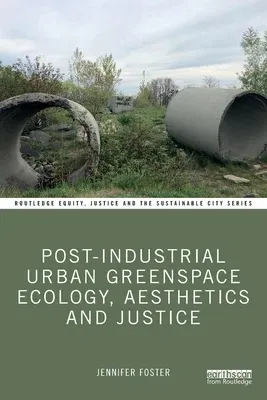Jennifer Foster
(Author)Post-Industrial Urban Greenspace Ecology, Aesthetics and JusticePaperback, 30 December 2022

Qty
1
Turbo
Ships in 2 - 3 days
Only 2 left
Free Delivery
Cash on Delivery
15 Days
Free Returns
Secure Checkout

Part of Series
Routledge Equity, Justice and the Sustainable City
Print Length
150 pages
Language
English
Publisher
Routledge
Date Published
30 Dec 2022
ISBN-10
1032410779
ISBN-13
9781032410777
Description
Product Details
Author:
Book Format:
Paperback
Country of Origin:
US
Date Published:
30 December 2022
Dimensions:
23.39 x
15.6 x
0.89 cm
ISBN-10:
1032410779
ISBN-13:
9781032410777
Language:
English
Location:
Oxford
Pages:
150
Publisher:
Weight:
240.4 gm